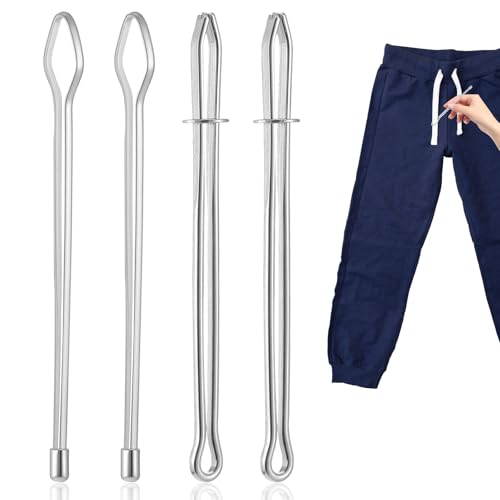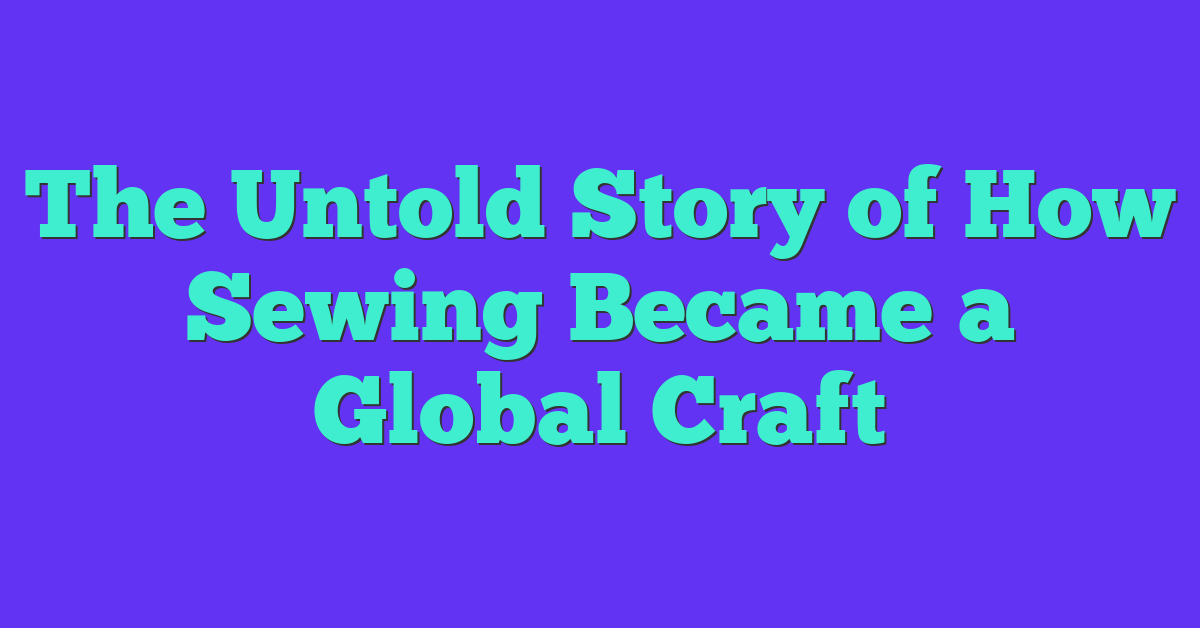Imagine stepping into the elegant and intricate world of Victorian fashion, where every stitch played a crucial role. Your sewing skills not only defined personal style but also influenced the trends of an entire era. Whether you’re a history buff or a sewing enthusiast, exploring how sewing shaped Victorian fashion offers a fascinating glimpse into the past.
From towering crinolines to detailed corsets, each garment was a masterpiece crafted with care. You’ll discover how skilled seamstresses and innovative techniques transformed fabric into iconic silhouettes. Let’s dive into the art and craftsmanship that made Victorian fashion truly timeless.
The Role of Sewing in Victorian Society
Sewing served as a critical element in Victorian society, influencing social hierarchy and education. It shaped daily life and reinforced cultural norms of the era.
Social Status and Sewing
Sewing signified social standing in Victorian England. Upper-class women created intricate garments, displaying wealth through fabrics and embellishments. Middle-class households focused on quality craftsmanship, emphasizing propriety and respectability. Lower-class families relied on sewing for practical needs, producing durable clothing for work and daily activities.
Key indicators of status included:
- Fabric Selection: Silks and fine linens for the wealthy, cotton and wool for others.
- Embroidery Detail: Elaborate patterns in high society, minimal decoration in lower classes.
- Garment Complexity: Complex designs like crinolines for the affluent, simpler styles for the working class.
Education and Skill Development
Sewing was integral to women’s education during the Victorian era. It developed fine motor skills and creativity, essential for managing a household. Formal instruction through schools and private tutors ensured proficiency in sewing techniques.
- Curriculum Integration: Sewing classes in girls’ schools emphasized technique and aesthetics.
- Apprenticeships: Young women learned advanced skills under experienced seamstresses.
- Skill Application: Practical projects, such as making dresses and household linens, reinforced learning.
Key Sewing Techniques of the Victorian Era
Victorian sewing techniques combined precision and artistry, shaping the distinctive fashion of the time. These methods enabled the creation of elaborate garments that reflected social status and personal style.
Tailoring and Dressmaking
Victorian tailoring focused on structured silhouettes and detailed construction. Key techniques included:
- Pattern Drafting: Accurate patterns ensured consistent garment shapes. Tailors used measurements to create custom designs for each client.
- Corset Construction: Corsets featured boning and lacing, providing the desired waistline and support. Techniques involved layering fabric and inserting steel or whalebone ribs.
- Full Skirt Assembly: Crinolines and bustles required precise stitching to achieve volume. Seamstresses employed gathered and pleated fabrics to build the expansive shapes.
- Button and Fastener Installation: Secure placement of buttons, hooks, and eyelets maintained garment integrity. This method ensured ease of wear and durability.
Embroidery and Ornamentation
Embroidery added intricate details and personalized touches to Victorian garments. Essential techniques included:
- Sashiko Stitching: Repeating geometric patterns enhanced fabric strength and aesthetic appeal. Common motifs included flowers and leaves.
- Beadwork Application: Small beads were sewn onto fabrics to create shimmering effects. This technique was often used on evening dresses and accessories.
- Lace Insertion: Delicate lace trimmed edges and added elegance to collars, sleeves, and hems. Different lace types, such as Chantilly and Valenciennes, were selected based on garment style.
- Appliqué Methods: Fabric pieces were layered and stitched onto base garments to form decorative images. Popular themes featured nature-inspired designs and elaborate scenes.
Finishing Techniques
Final touches ensured Victorian garments were polished and refined. Important finishing methods included:
- Hem Stabilization: Hems were reinforced with binding or stitching to prevent fraying and maintain shape.
- Pressing and Ironing: Garments were meticulously pressed to achieve crisp lines and smooth surfaces, essential for a neat appearance.
- Buttonhole Reinforcement: Extra stitching around buttonholes increased their longevity and functionality.
- Edge Binding: Raw edges were covered with ribbon or fabric strips to provide a clean finish and prevent unraveling.
By mastering these sewing techniques, Victorian dressmakers created garments that were both functional and visually stunning, defining the era’s iconic fashion.
Impact on Victorian Fashion Trends
Sewing transformed Victorian fashion trends, enabling the creation of iconic styles and detailed garments. Your sewing skills directly influenced the elegance and complexity of the era’s attire.
Silhouette and Design Innovations
Victorian sewing techniques pioneered distinct silhouettes that defined the era. Structured corsets shaped the waist, creating the coveted hourglass figure. Crinolines and bustles expanded skirts, adding volume and movement. Tailoring methods ensured garments maintained their form, while pattern drafting allowed for customization. These innovations not only reflected social norms but also showcased the wearer’s status and attention to detail.
Fabric Choices and Sewing Methods
Selecting the right fabric was crucial in Victorian fashion, as it determined both the garment’s appearance and functionality. Silk, satin, and wool were popular choices, each offering different textures and drapes. Sewing methods such as hand stitching and machine sewing balanced craftsmanship with efficiency. Embroidery and lace insertion added decorative elements, while layering techniques provided depth and richness. Your expertise in fabric selection and sewing ensured that Victorian garments were both stylish and durable.

Women’s Roles and Sewing
Domestic Life and Sewing
Sewing defined daily routines for Victorian women. You managed household garments, including dresses, blouses, and undergarments. Each piece required precision and creativity, ensuring your family’s attire reflected social status. Additionally, you crafted linens like bedspreads and curtains, enhancing your home’s aesthetic. Teaching sewing skills became a vital part of your role, passing techniques to daughters and daughters-in-law. These practices fostered a sense of accomplishment and reinforced family bonds.
Economic Contributions through Sewing
Sewing provided significant economic opportunities for Victorian women. Many operated from home as seamstresses, producing custom garments for affluent clients. You contributed to the local economy by purchasing fabrics and materials, supporting textile manufacturers and suppliers. Additionally, women participated in cooperative sewing groups, pooling resources to create and sell products collectively. This collaboration not only increased household incomes but also empowered you with financial independence. Your expertise in embroidery and decorative stitching added value to products, making them highly sought after in the market.
Legacy of Victorian Sewing
Victorian sewing techniques and aesthetics continue to influence today’s fashion landscape. They serve as both inspiration and foundation for contemporary designers and sewing enthusiasts.
Influence on Modern Fashion
Victorian sewing shapes modern fashion through structured silhouettes and intricate details. Tailored jackets and corset-inspired tops emphasize waistlines and form-fitting fits. Lace and embroidery add elegance to contemporary garments, mirroring Victorian embellishments. Sustainable fashion benefits from Victorian craftsmanship by focusing on quality and durability. Pattern drafting techniques from the Victorian era inform today’s design processes, ensuring precise garment construction. Additionally, Victorian-inspired fashion shows and collections highlight the enduring appeal of these historical styles, blending classic elements with modern trends.
Preservation of Sewing Traditions
Preserving Victorian sewing traditions involves various efforts to maintain and revive historical techniques. Museums display Victorian garments, showcasing the craftsmanship and detailed construction methods. Educational institutions offer courses on historical sewing techniques, teaching skills like pattern drafting and embroidery. Sewing communities and enthusiasts participate in workshops and reenactment events, sharing knowledge and passion for Victorian fashion. Vintage pattern archives provide resources for recreating authentic Victorian garments, ensuring these styles remain accessible. Additionally, publications and online platforms document and promote Victorian sewing practices, fostering continued appreciation for this cultural heritage.
Conclusion
« Top 10 Best Blogs for Advanced Sewing Techniques You Can’t Miss
Top 10 Best Sewing Webinars to Watch in 2025 – Elevate Your Skills Now »
Exploring Victorian fashion through sewing shows just how much creativity and skill went into every garment. You can see how sewing was more than just making clothes—it was a way to express identity and status. The techniques and styles from that era still inspire today’s designers, proving that the craftsmanship of the past continues to shape modern fashion. Whether you’re sewing your own pieces or appreciating historical designs, understanding this connection adds a whole new layer of appreciation. Embracing these traditions can spark your own creativity and deepen your love for the art of sewing.

















